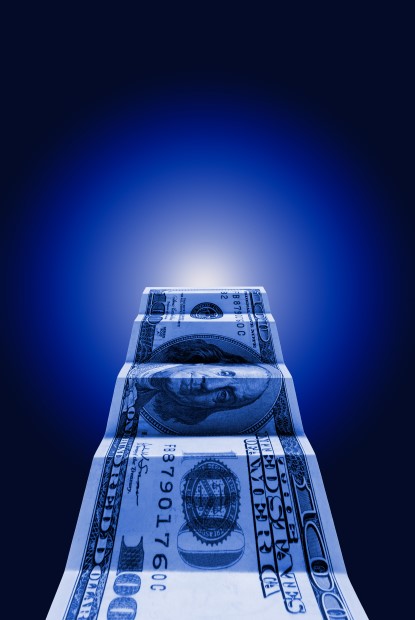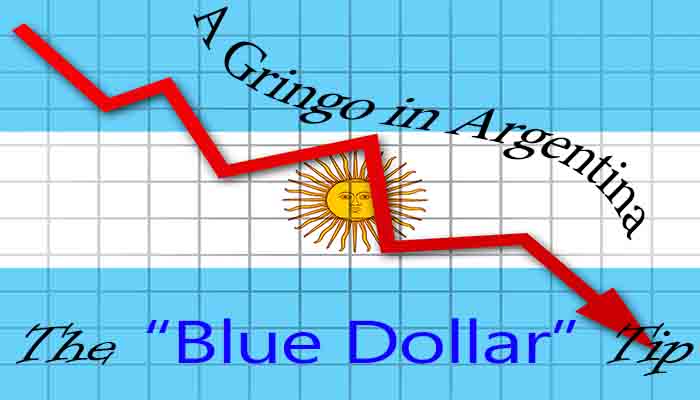For anyone travelling into Argentina for any period of time, it’s vital that you bring in either Euro’s or American Dollars. We were told about this while in Paraguay and if we hadn’t found out, then we’d have been none the wiser.

The current currency situation in Argentina is such that if you use ATM’s to withdraw cash, then you’ll get the ‘official’ rate of 8.40 pesos for $1. However, if you go to the black market you’ll get 13+ pesos for your dollar.
Big difference eh?!
Even with the ‘blue dollar’ rate, Argentina is pretty expensive. It only makes logical sense for tourists to bring in dollars and exchange them for the blue dollar rate; rather than using the ATMs or banks to withdraw their money from. What’s happened that the currency is so weak you may be thinking?
The Fall of the Argentinian Peso
Since 2002, Argentinians have flocked to the black market streets to get their paws on some prized dollars. This was a direct result of the government’s debt default which created complete distrust in the Argentinian peso.
So today, the blue dollar exchange rate has become so big that it gets printed daily in the Buenos Aires paper – El Cronista. In addition to this, it’s updated live online so that everyone can see what their lucrative dollar with fetch them. The exchange rate constantly fluctuates though.
When we came into Argentina two weeks ago on a 2 day stopover on route to Uruguay, we exchanged US $200 on the black market at got an exchange rate of 13.70 pesos per dollar. That was 2,740 pesos. If we were to take out the same amount of pesos from the ATM then it would have cost us a staggering US $326!
So you can see just from that example how crazy it would be to withdraw from the ATM. Ok, so you might be thinking that you can withdraw American dollars from a Bank in Argentina and then exchange them for the blue dollar rate. This is incredible difficult for residents to do and impossible for tourists. The government has made it so hard for residents to obtain dollars.
There are major hoops that locals have to jump through in order to get some of the gold dust. For example, if an Argentinian wants to travel to another country then they have to supply their tax number and give exact details to when, where and why they are travelling. Even after all these requirements as well as standing in line for hours they can be denied American dollars.
The Blue Dollar

What a lot of expats living in the country do is leave the country, stock up on dollars and then head back. This can be seen quite a lot in Buenos Aires where frequent trips to Montevideo in Uruguay provide access to healthy green notes.
There is one company in particular that I read about that provides a ‘pizza delivery service for money’ – only for foreigners in the country. This is like a mobile exchange. They provide Euro’s, dollars or Argentine pesos at black market rates.
All that you have to do is email the company with an amount you’d like, decide on a time and place, and one of their couriers will arrive by bicycle or even bus if you’re in a remote part of the country. The only condition is that you have a foreign bank account.
The company charges a 5% fee, which still saves you a ton of money! I haven’t read too much into this method of accessing America Dollars, but if we were staying for a prolonged period of time in Argentina, then it would be something we’d definitely look into.
One thing to keep in mind when exchanging money for the blue rate in Argentina is that the guys on the street shouting “Cambio” (exchange) are always on the lookout for an easy target. What I mean by this is that they will try and scam you if they think you don’t know what the blue rate is for the day.
Because the rate changes each day and sometimes by 1 or 2 pesos, you need to be aware of what rate you’re getting. Just go up to them and ask what the rate is. What we did was take out our phone’s calculator and ask them to input the rate they give per dollar.
Earlier on today in Mendoza, we found a guy who was offering us 11 Pesos for $1 – which we knew wasn’t a good rate. So we went a little further down the street and found a guy who gave us 13 Pesos for $1. So we exchanged $100 with him and got 1,300 Pesos instead of 1,100, which the first guy was offering. That’s an extra $25 to spend!
Be aware of Fakes
You also have to be aware of ‘fake’ pesos, as it’s a problem in the country unfortunately.
However, holding the notes up against a light should allow you to see if it’s a fake or not. Always check and always count out the amount they give you. If it wasn’t for tourists supplying the demand of dollars then the black market would simply collapse.
The key to remember when in Argentina is that if you withdraw money from banks or ATMs then you are literally throwing away nearly 50% of your hard earned money.
Bring your Euros or American dollars into the country and get the blue rate. It’s still expensive overall for living in the country, but using the official rate is just not an option.











How are prices for food, hostels/hotels, and attractions in Argentina, though? You said that Argentina was expensive, but, I thought it was one of the cheapest South American countries you can travel in given the falling Peso. Especially compared to next door neighbour, Chile.
Prices are pretty expensive overall Ray. Definitely not the cheapest country in S.A by a long shot. But Chile beats it in terms of expressiveness! Ohhhh man – Chile is on probably even harder on the pocket than Brazil!
This situation is awful for locals, which is such a shame, but it really works to the tourists’ advantage if you know what you’re doing. This is definitely my #1 piece of advice for anyone visiting Argentina: take foreign currency. We saw places in Buenos Aires that would also exchange Euros, British pounds and Brazilian reals. Clearly any currency is worth more than the Argentine peso at the moment!
Absolutely agree Sam. It’s good for tourists as you said. 😉
That’s good to know for sure. I’ll be sure to get some USD with us when we head into Argentina.
I also found out that it’s the same for Cuba, they only accept USD.
Definitely bring in those USD’s mate 🙂
US Dollars are probably the worse currency to take to Cuba, you’re hit with a 10% fee when exchanging. Canadian $ and Euro are better.
If you have dollars in Argentina, “You are Gardel” (It’s a local expression that means that you are in the best position)
Really nice tips i was in Buenos Aires, Salta and Mendoza really awesome places to know it was my second time in Argentina but not the last, a guy from hotel help me to trade because counterfit are everywhere the fellow was call Patricio and has a web page call ExchangeinArgentina.com 🙂 really safe and fast he just work in the city but speaks good english and save a couple of times before hitting Salta and Mendoza hah well hope this helps cheers from NZ
Thanks for your input George and hope that your return trip to Argentina will be just as enjoyable 🙂